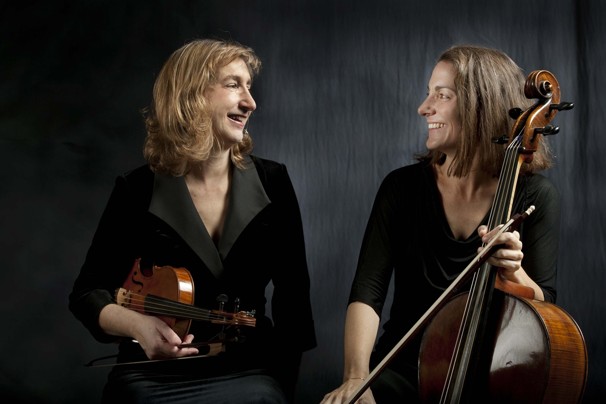The Vivaldi Project at the Washington Early Music Festival
By Stephen Brookes • The Washington Post • June 11, 2012
For the past six years or so, The Vivaldi Project has been on a mission: to explore not only the music of the early baroque period, but also the astonishingly rich musical language, with its own precise grammar of expression, that underlies that music. The intriguing idea has made the ensemble’s concerts, as it showed Sunday at St. George’s Episcopal Church in Arlington, into events that forge fascinating ties among composers of the time. Elizaebth Field and Stephanie VialFor Sunday night’s concert (part of the Washington Early Music Festival, which runs through the end of the month), the ensemble looked at what lead violinist Elizabeth Field called the “tug of war” between Italian and French composers of the baroque. The French tended to be more restrained, with an emphasis on harmony rather than melody, and the Italians were more emotional and freewheeling.
Elizaebth Field and Stephanie VialFor Sunday night’s concert (part of the Washington Early Music Festival, which runs through the end of the month), the ensemble looked at what lead violinist Elizabeth Field called the “tug of war” between Italian and French composers of the baroque. The French tended to be more restrained, with an emphasis on harmony rather than melody, and the Italians were more emotional and freewheeling.
To drive the point home, the group contrasted a quintessentially French work, the Suite from “Thesee” (1675) by Jean-Baptiste Lully, with Arcangelo Corelli’s Sonata in G Op. 3 No. 6. Lully’s music can be hard for modern ears to warm up to; though beautifully made, it’s formal to the point of chilliness, and there's often a mincing, precious quality that’s not to every taste. The Corelli, by contrast, was a vibrant and much earthier piece featuring superb playing by Field with the gifted violinist Allison Edberg, ensemble co-founder Stephanie Vial on cello, Joseph Gascho at the harpsichord and William Simms on theorbo.
No sooner had the Corelli ended, a heart-stopping crack rang out: The neck of Simms’s theorbo (a sort of lute with an extended neck and as many as 20 strings) had snapped. Simms was sidelined, but the group soldiered on with an early Vivaldi sonata and a fascinating trio sonata by Francois Couperin called “L’apothese de Corelli” — a French interpretation of the Italian style.
There were other gems on the program, including a richly textured sonata for four violins by Giovanni Legrenzi, and a fiery little concerto by Vivaldi. But perhaps the most unusual work was the Sonata in C Minor, “Sanguineus und Melancholicus” by C.P.E. Bach, a musical debate between an optimist and a pessimist. Field and Edberg acted out the opposing roles with great charm, and the conversation ended with harmony, hugs and a consensus that the glass is, in fact, half-full.


Reader Comments